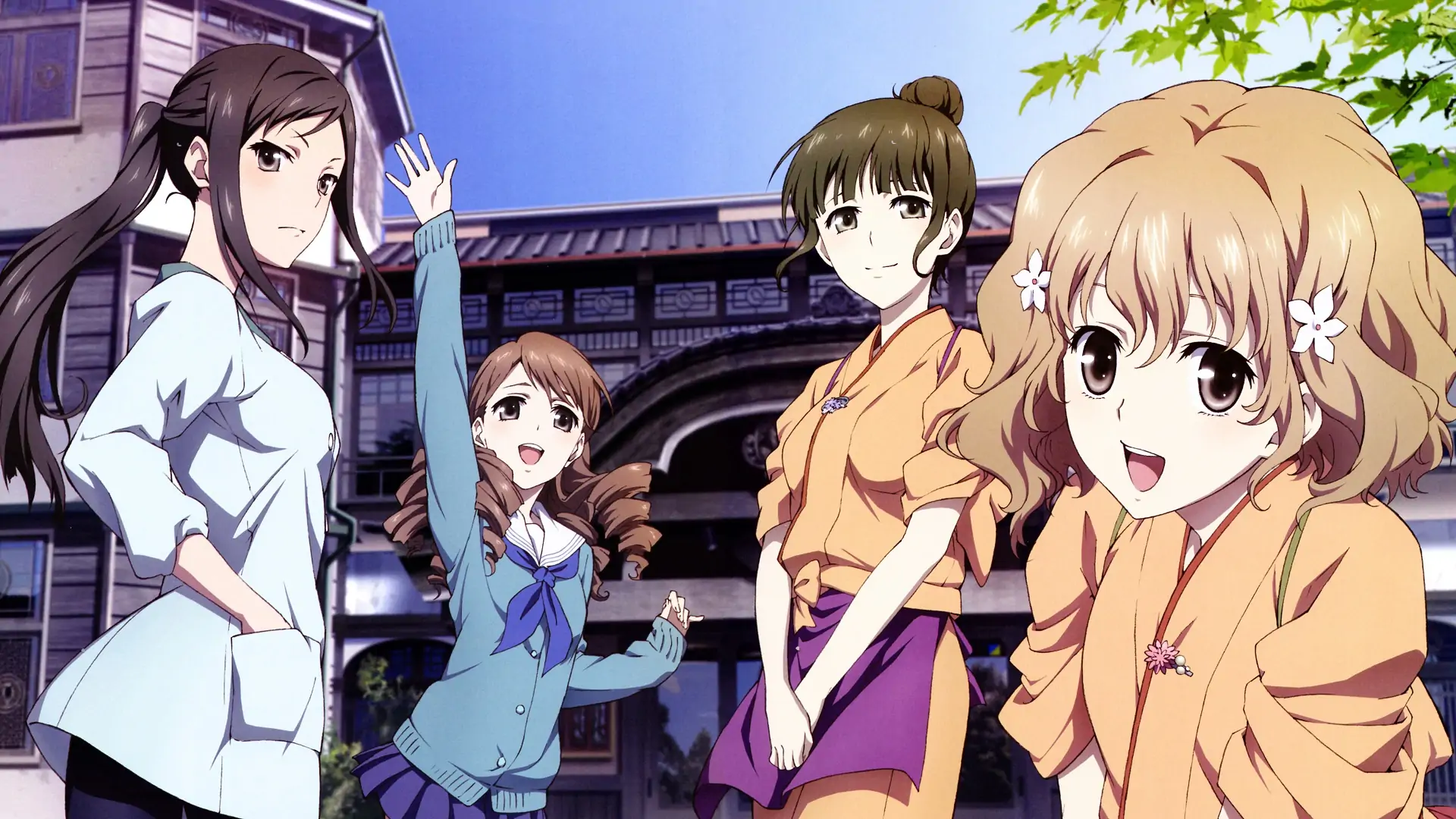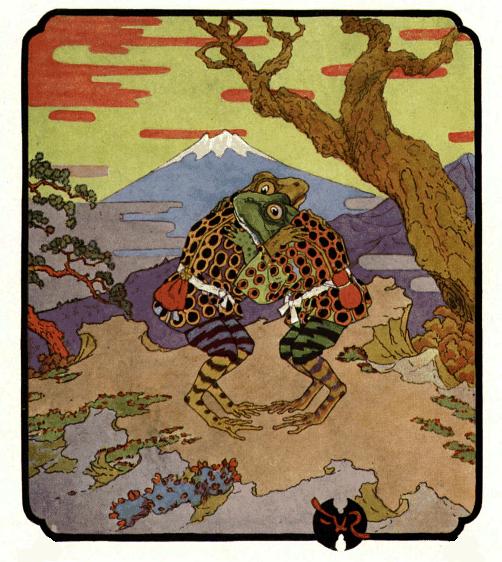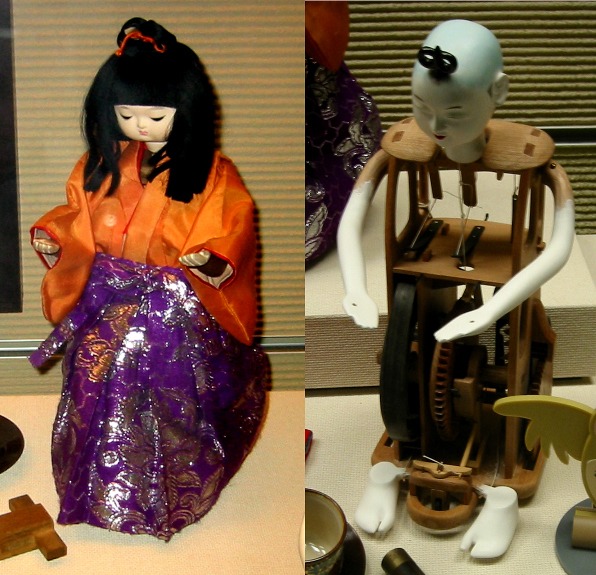
“We bathe at home to completely avoid the eyes of others; In Japan, man, woman or monks alike bathe in public baths or, by night, in front of their homes.”
History of Public Bathing
When Buddhism arrived in Japan in the 6th century, bathing was already established with the elites of Japan. Buddhism brought the idea of purity to the custom. At first, bathhouses were enjoyed only by monks and the elites who could afford to build them. In Zen monasteries, the bath became a place to meditate and attain enlightenment. Over time, temple baths opened to the poor, and rich elite would sponsor these bathhouses. The best known was Empress Komyo (701-760), the consort of Emperor Shomu (701-756) who vowed to personally wash 1,000 beggars and did so at the Hokkeji bathhouse in 747.
Eventually, these developed into the social gathering places of the Edo period. These commercial baths allowed people to rent the space for special occasions and business meetings. Women also rented these spaces. A record from 1405 mentions court ladies renting a bath far enough away that it required them to travel by cart to reach it (Butler, 2005).
Now you’d think with all this public nudity shenanigans would break out at some point. After all, as anime suggests, mistakes happen! These “mistakes” were just part of attending bathhouses for a time. During the Edo period, male bathers enjoyed the attentions of yuna, or bath girl. These young ladies would help men bathe and take care of…other needs for added cost. But this didn’t happen as much as you may suspect. Bathhouses were important social centers, not brothels. In 1657, the Shogunate banned yuna (Wynn, 2014).
Types of Bathhouses
Much like the Greek and Roman baths, Japanese sento were places to conduct business and make alliances. Clans and families would meet to conduct negotiations. Bathhouses were one of the few places in feudal Japan where social status wasn’t as much of a factor.
There are three types of baths:
- sento – the public bath we discussed
- onsen – the hot springs anime rom-coms love
- ofuro – the private bath
Hot springs have certain requirements before they can be called onsen. They have to have 19 different types of minerals, meet certain levels of hydrogen and flourine ions, and meet certain temperature requirements (Wynn, 2014). Ofuro also appear in anime. These are private baths common to Japanese households now. In the past, only the rich could afford them.
Japanese people typically wash in the evening after dinner. Baths are associated with nighttime and relaxing instead of getting ready for the day like here in the United States. Some households follow old ofuro rules. The head of the household gets first dibs, while the water is at its hottest and cleanest. Then male members take their turn by descending age. Finally, females take their turn also by descending age. Just as many households bathe in order of convenience: who has to go to bed early and the like (Wynn, 2014). It’s not unusual to spend as much as 45 minutes washing and soaking.
Unlike Greeks and Romans, Japanese custom is to wash before getting into the bath. That is why in anime you see people sitting on little stools washing before soaking. Baths are meant for relaxing not for washing off dirt. A study in 2000 looked into how a hot relaxing bath benefits sleep: it induces quite a good sleep actually (Kagamimori, 2000).
Bathing Etiquette
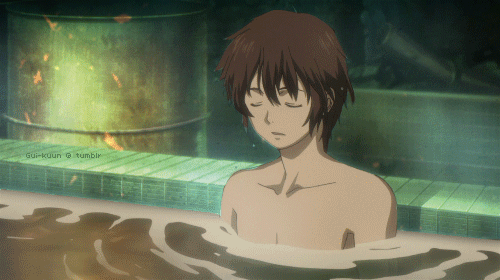 Like every aspect of Japanese culture, there are rules to follow when you visit onsen or bathhouses. Understanding these rules will help you better understand some of the more subtle jokes anime likes during their onsen scenes. These notes are from an American military dispatch I found (Targeted News Service, 2013). First and foremost, onsen are for soaking only, not for washing.
Like every aspect of Japanese culture, there are rules to follow when you visit onsen or bathhouses. Understanding these rules will help you better understand some of the more subtle jokes anime likes during their onsen scenes. These notes are from an American military dispatch I found (Targeted News Service, 2013). First and foremost, onsen are for soaking only, not for washing.
Next is the small towel rule. You are given 2 towels at onsen. People use the full-size towel for drying off, and you take the small hand-sized towel with you into the hot springs, but it cannot touch the water. It is used to wipe sweat from your head and face. When you aren’t using it, it is folded on top of your head or, for ladies, wrapped around your head to keep your hair out of the water. Rising and wringing the towel in the water is taboo.
While onsen are gender segregated, children can attend opposite-gender baths with their parent or guardian.
Most bathhouses have pools with different temperatures. The main pool is hot, while other pools have lower temperatures. Custom recommends people move to lower temperature pools to prevent dehydration from the heat or heat-stroke. You see many anime characters stay in the hot pool until they pass out because they are too embarrassed to move to another pool.
You need to be comfortable being in the buff, seeing others in the buff, and seeing naked children of both genders. Japanese customs have a different view of nudity than us in the West, at least when it comes to communal baths.
Finally, don’t be surprised if you are barred from public bathing areas if you have tattoos. Tattoos are not mainstream in Japanese culture, and they have long association with crime, delinquency, and the yakuza. More then half of Japanese hotels (56%) do not allow people with tattoos into their bathing facilities (Demetriou, 2015).
Body Image and Public Nudity
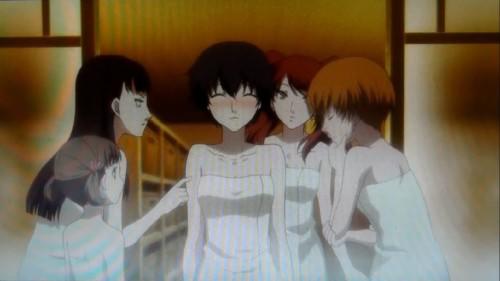
“Every single woman I saw out there was unblemished and thin. Thin thin thin, to the bone. The women in the magazines are, of course, still like that. Way too spotless to be real. When I look at them for too long I start to believe that women really look like that, and that I should also aspire to look like that.”
Anime scenes touch on this, particularly with female characters. Most of the time they will compare their breast sizes, but the comments still suggest a disconnect between reality and expectations. Flat-chested characters will feel inadequate next to their buxom friends. This is both commentary on modern body ideals and also serves to reinforce them. Public baths shed the clothing media places on our minds and reveals reality with all its lumps and droop. Men also struggle with media-forced body images, if to a lesser extent.
Understanding the long history of Japanese bathing customs helps us better understand the humor of onsen scenes in anime. Trips to hot springs and bathhouses connect the characters to the past, connects them with each other, and helps the characters relax. Of course, it provides the natural setting for fanservice and hijinks.
References
Butler, Lee (2005) “Washing Off the Dust”: Baths and Bathing in Late Medieval Japan. Monumenta Nipponica, 60 (1) 1-41.
Demetriou, Danielle (2015) Majority of Japan hotels ban tattooed tourists from public baths;
Most Japanese hotels refuse to allow visitors with tattoos from entering their public baths. The Telegraph. October, 2015.
Kagamimori, S., Sekine, M., Izumi, I., Ohmura, S., Liu, Z., Matsubara, I. and Sokejima, S. (2000), Effects of taking a Japanese-style bath on sleep. Focus on Alternative and Complementary Therapies, 5: 91. doi:10.1111/j.2042-7166.2000.tb02351.x
Loureiro, R.M. (2000) Turning Japanese? The Experiences and writings of a Portuguese Jesuit in 16th century Japan. ÉCOLE FRANÇAISE D’EXTRÊME-ORIENT
Shin, Raimy. I Learned to Love My Body in A Mokyoktang. Tufts: Jumbo Talk http://admissions.tufts.edu/blogs/jumbo-talk/post/i-learned-to-love-my-body-in-a-mokyoktang-aka-a-big-nude-public-bath/
Targeted News Service (January 25, 2013 ). Japan Travelers’ Onsen Etiquette Notes.
Wynn, L (2014) Self-Reflection in the Tub: Japanese Bathing Culture, Identity, and Cultural Nationalism. Asia Pacific: Perspectives, 12(2), 61-78.

